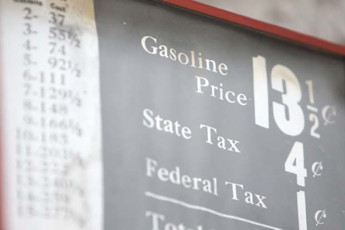By Dan Godsell, Global Sales, North America
In today’s fast-paced, ultra-competitive global economy, change is a necessary constant to remain competitive. Strategic shifts in specific functions, including business travel programmes, can send ripple effects across an organisation. Implementing a large corporate travel programme is no small feat, but there are strategies that will help to ease change management, particularly in this age of digital transformation.
This is the second in a series of articles on travel procurement in a rapidly changing economy. In the first article, I wrote about procurement practices struggling to keep pace with a fast-changing world. Here, I want to focus on the topic of strategic alignment with corporate priorities by offering a big-picture view, a real-world example and some specific steps that you can take to align your travel programme with your organisation’s goals.
The value of this alignment process can be clearly seen if we consider the effects of misalignment. Goals missed typically have ramifications such as reduced revenue and/or share price. It’s easy to understand these effects when measuring items such as R&D investment gone awry. Less tangible, or indirect categories, also impact revenue, employee retention, customer satisfaction and much more if they’re not aligned to organisational goals. Travel programmes can fall into this category.
Travel and procurement teams can build their credibility and influence by purposefully linking their travel programmes to the big picture. Let’s look at a scenario that demonstrates how this alignment effort helps the travel manager, the organisation as a whole and travellers.
Often in executive strategy meetings, some priority is placed on employee recruitment and retention. We’ve been hearing about the war for talent for many years, and the pressure to find and keep the best people has never been higher. For context, in August 2019, the US unemployment rate was at 3.7 per cent, according to the federal Bureau of Labor Statistics.[1] That’s historically low—even lower than what some economists consider full employment. Yet, according to the St. Louis Federal Reserve Bank, the professional unemployment rate is 2.9 per cent as of July 2019.[2] In Canada, the unemployment rate was at a nearly 20-year low of approximately 5.8 per cent in 2018.[3] That means that within the framework of an overall tight labour market, there are segments of specialised capability where the war for talent is very real.
The consequences of that competition for the best and brightest are quite tangible. We reported that research showed that replacing an employee who is paid an annual salary of US$100,000 can cost US$213,000—213 per cent of the salary. Building on that one data point, a large enterprise can save a significant amount of money with relatively small reductions in turnover.
If one of your organisation’s goals is to find and retain the best talent, your travel programmes can become a part of this strategy.
I recently consulted with a client, a financial firm that’s been growing rapidly, at the same time that they were completing their yearly planning. One of the key drivers behind several of their strategic goals was the changing demographics of their employees. Millennials now make up a majority of their workforce, and they knew this generational change would continue, along with the evolving expectations of this workforce cohort.
At the same time, the travel and procurement team was reshaping the travel programme. The organisational goal of ‘find and retain the best talent’ was translated into ‘provide a next-generation traveller experience’ in order to fit the context of the travel program. It was used as part of their TMC evaluation criteria, and, just as importantly, as part of their communications and change management process.
When leadership asked why they were changing the travel programme, the team was able to provide them with the same strategic reasoning as the leadership team. Suffice to say, there was buy-in from the top down.
Happy travellers are happy employees. Happy employees provide good customer service.
Recruitment and retention are just two examples that demonstrate the value of aligning with corporate goals. Some companies might work towards being a more data-driven organisation. How do you collect, analyze and take action on your travel programme data? Perhaps one of your initiatives is to simplify. Cost reduction and control, digital transformation and safety above all else are also examples of guiding principles, and there are many more. You’ll discover how this can apply to numerous corporate strategies, visions, imperatives and goals.
As business travel strategy discussions take place in your organisation, look for opportunities to align your travel programme. That might mean picking one or two corporate strategic goals and spending time understanding how travel impacts those goals. In evaluating travel management companies (TMCs), ask them how their services and tools support those goals. Work with your procurement team to build those criteria into your provider evaluations.
Of course, with strategy updates happening regularly, you also need to be prepared to do this again in future planning cycles. The alignment process then evolves into a continuous improvement method—a topic for another article.
One thing is for sure. Regardless of what your business travel programme goals are, if you can use reasoning and messaging that resonates throughout your organisation, you’ll have better results.
To read more on our modern take on business travel procurement, download the white paper.
[1] “Civilian unemployment rate,” Bureau of Labor Statistics, updated August 2019, https://www.bls.gov/charts/employment-situation/civilian-unemployment-rate.htm#.
[2] “Unemployment Rate: Professional and Related Occupations,” Federal Reserve Bank of St. Louis, updated August 2019, https://fred.stlouisfed.org/series/LNU04032217.
[3] “Rate of unemployment in Canada from 2000 to 2018,” Statistica, 29 April, 2019, https://www.statista.com/statistics/578362/unemployment-rate-canada/.







